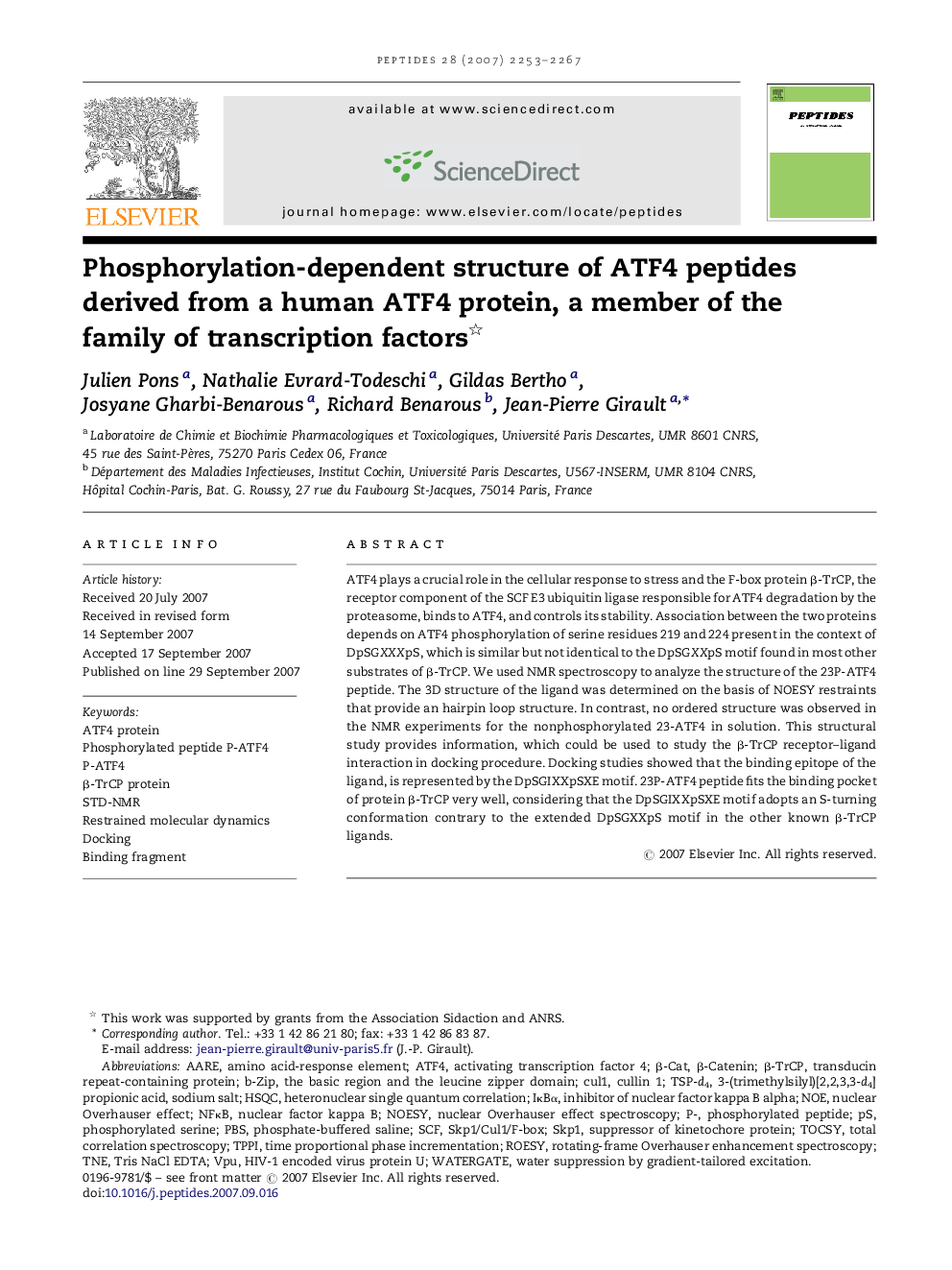| Article ID | Journal | Published Year | Pages | File Type |
|---|---|---|---|---|
| 2007444 | Peptides | 2007 | 15 Pages |
ATF4 plays a crucial role in the cellular response to stress and the F-box protein β-TrCP, the receptor component of the SCF E3 ubiquitin ligase responsible for ATF4 degradation by the proteasome, binds to ATF4, and controls its stability. Association between the two proteins depends on ATF4 phosphorylation of serine residues 219 and 224 present in the context of DpSGXXXpS, which is similar but not identical to the DpSGXXpS motif found in most other substrates of β-TrCP. We used NMR spectroscopy to analyze the structure of the 23P-ATF4 peptide. The 3D structure of the ligand was determined on the basis of NOESY restraints that provide an hairpin loop structure. In contrast, no ordered structure was observed in the NMR experiments for the nonphosphorylated 23-ATF4 in solution. This structural study provides information, which could be used to study the β-TrCP receptor–ligand interaction in docking procedure. Docking studies showed that the binding epitope of the ligand, is represented by the DpSGIXXpSXE motif. 23P-ATF4 peptide fits the binding pocket of protein β-TrCP very well, considering that the DpSGIXXpSXE motif adopts an S-turning conformation contrary to the extended DpSGXXpS motif in the other known β-TrCP ligands.
